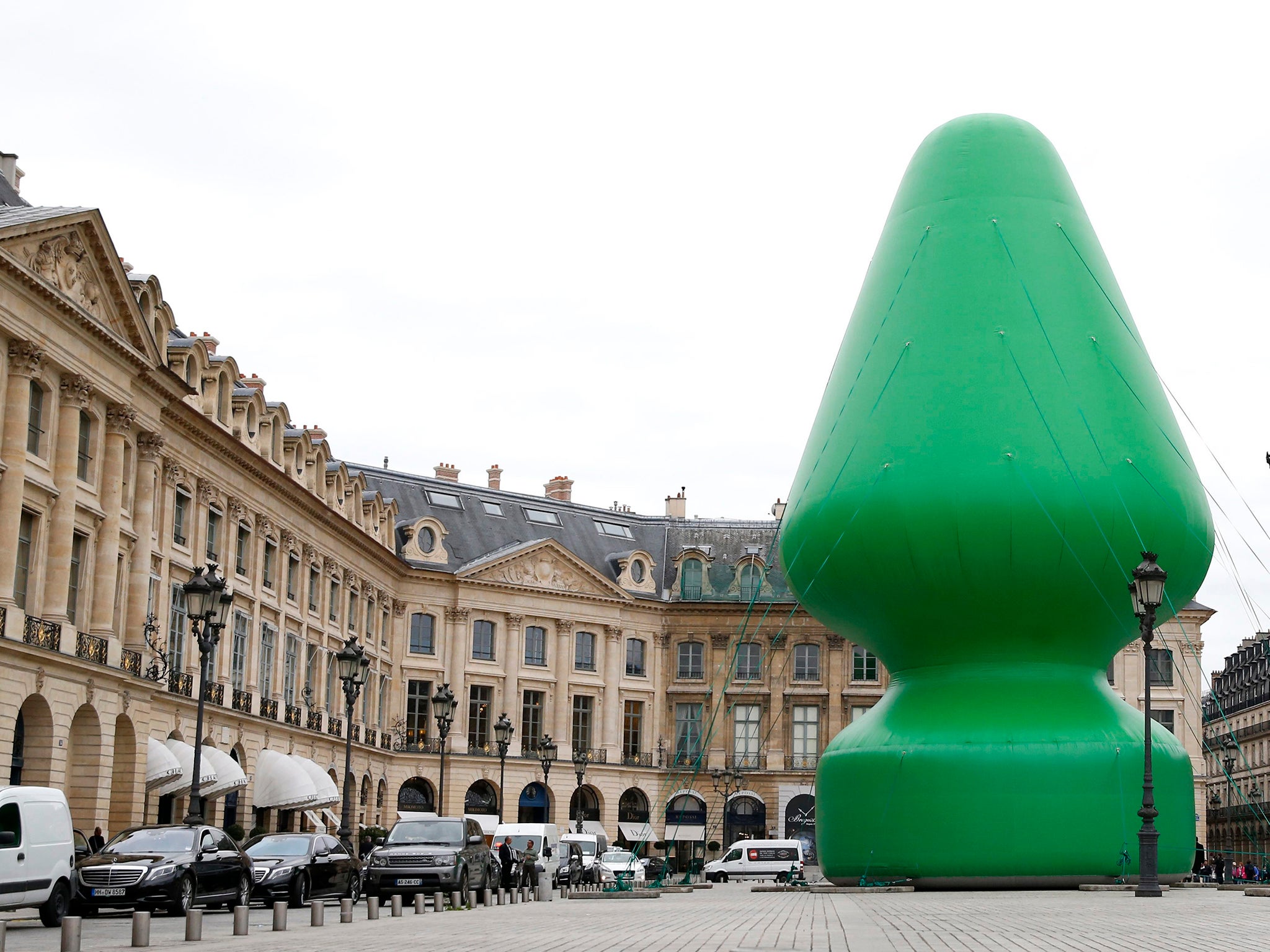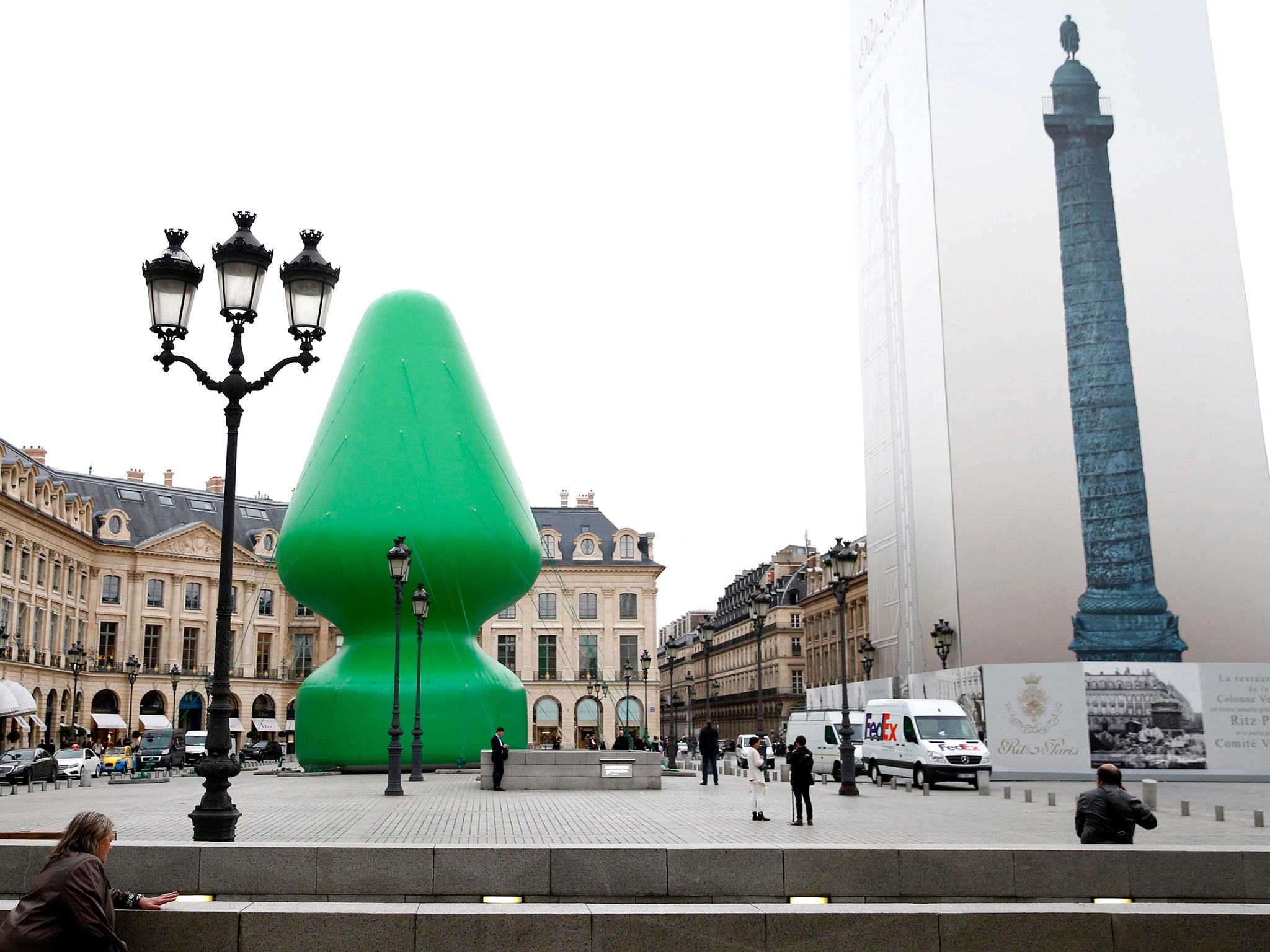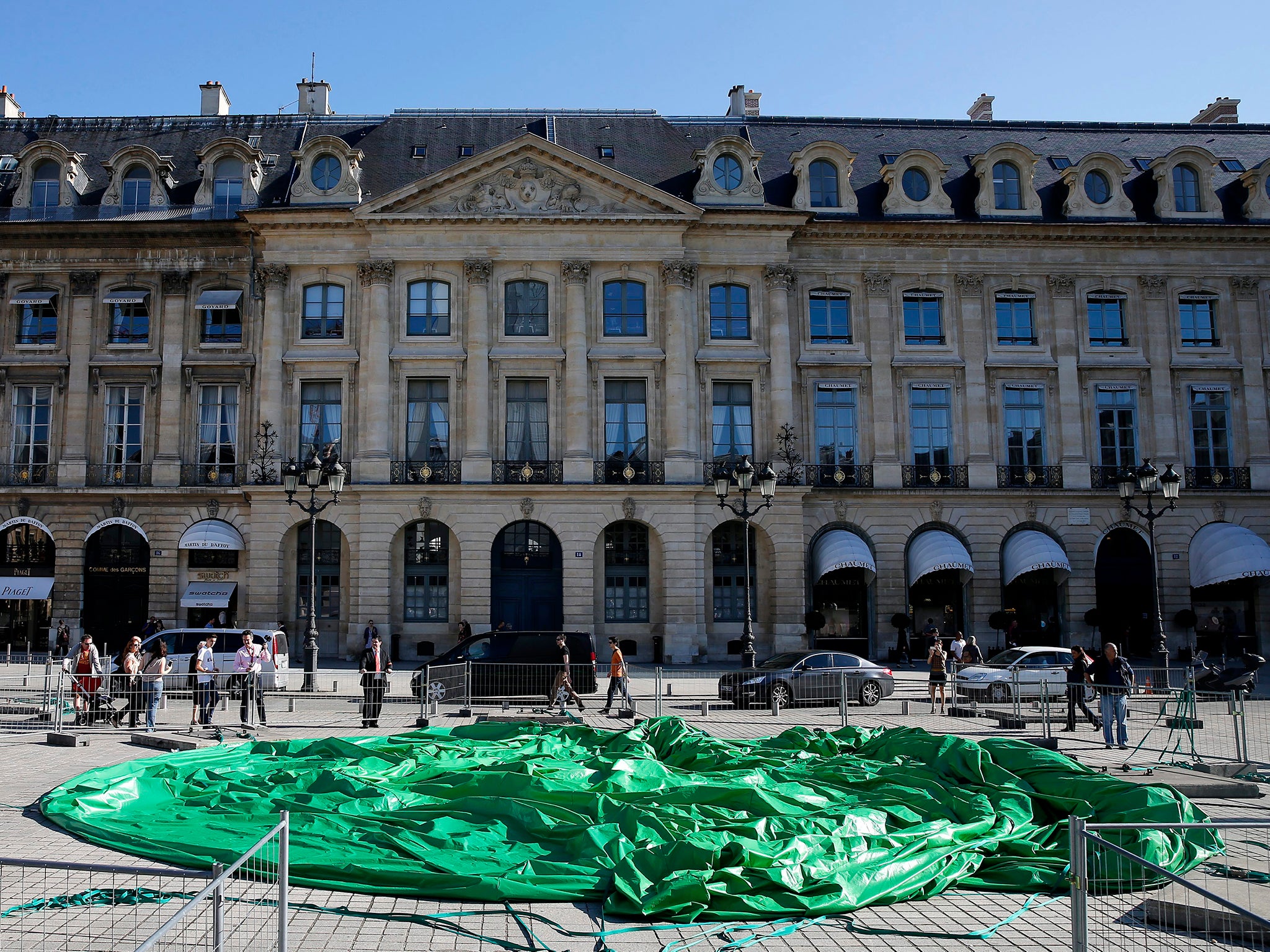Paul McCarthy: Chocolate Factory, Monnaie de Paris, review: An artist takes sweet revenge
The Parisians didn’t like his explicit Tree, so how will they react to Paul McCarthy’s new show, featuring sex toys, €50 chocolate Santas and a riposte to his critics?

Your support helps us to tell the story
From reproductive rights to climate change to Big Tech, The Independent is on the ground when the story is developing. Whether it's investigating the financials of Elon Musk's pro-Trump PAC or producing our latest documentary, 'The A Word', which shines a light on the American women fighting for reproductive rights, we know how important it is to parse out the facts from the messaging.
At such a critical moment in US history, we need reporters on the ground. Your donation allows us to keep sending journalists to speak to both sides of the story.
The Independent is trusted by Americans across the entire political spectrum. And unlike many other quality news outlets, we choose not to lock Americans out of our reporting and analysis with paywalls. We believe quality journalism should be available to everyone, paid for by those who can afford it.
Your support makes all the difference.Paul McCarthy is apparently “exhausted”.
It’s certainly been quite a 10 days in Paris for the conceptual artist and provocateur par excellence. While installing Tree, his inflatable Christmas fir-cum-giant green sex toy in the middle of the Place Vendôme, the artist was insulted and slapped by an enraged passer-by. Forty-eight hours later, the piece was vandalised and deflated. He chose to withdraw it rather than risk further confrontations. Subsequently, the work has been discussed and derided across the global media.
Talking at the opening of Chocolate Factory, the first major exhibition of his work in France, McCarthy was philosophical about the broader implications of the attacks. He says that the real debate wasn’t about the tree being removed, “It was about society questioning art and considering the role art plays and the role art doesn’t play.” He revealed that the events also forced him to question his own artistic identity and, in an unprecedented move for the tightly curated contemporary art world, McCarthy responded by working these questions into the show, adjusting it in the light of the Place Vendôme incidents.
Chocolate Factory is the inaugural exhibition at the newly renovated Monnaie de Paris, the city’s historic mint. The institution is attempting to make its name as a venue for cutting-edge art and McCarthy is a bold choice to showcase the space. The American artist has created an intense and acutely introspective work he describes as a series of “reflections and projections to create multiplicity”. The spirit of subversion, colliding high culture with low trash, characteristic of McCarthy’s previous work, pervades the installation.

After negotiating tight security, visitors ascend the grand staircase and encounter a forest of multi-coloured inflatable “trees”, or sex toys, depending on their perspective. A smaller version of the notorious Tree is included here, lurking provocatively at the back. The inflatables are surprisingly noisy, powered by fans that lend an industrial drone background, incongruous in the refined 18th-century surroundings.
The smell is also striking. A sickly waft of high-grade carúpano cocoa fills the exhibition, stemming from the working chocolate factory at its centre. The factory, staffed by poker-faced male and female performers wearing red uniforms and long blond wigs, produces 300 chocolate Santa Clauses, and miniature versions of the Vendôme Tree, per day. As McCarthy says, “The factory just keeps going: it won’t stop.” The chocolate treats are stacked around the Monnaie, with take-home versions sold for a hefty 50 euros (£40) each. On opening, the space held 4,000 figurines; like a demented Willy Wonka, McCarthy anticipates there will be around 15,000 by the time the show closes. Again, the mechanical clunking jars with the elegance of the Monnaie’s gilded Salon Dupré.
The visitor continues past the factory and into the backroom. This is where the show’s real interest lies – an insight into the artist’s subconscious. The offbeat absurdist humour that characterises McCarthy’s strongest work is absent. Rather, this is an encounter with the raw, unfiltered voice of McCarthy as he uses his work to come to terms with the assault and the vandalism of Tree. The shutters are drawn, plunging the rooms into darkness, the rows of chocolates lit only by video projections. These, filmed in situ in the days immediately preceding the opening, show the artist’s hand scrawling obscenities directly inspired by the insults he received during the Tree installation: foul mouthed and anti-American.

McCarthy has internalised these insults and reflects on both “how is America perceived today?” and his position as a “stupid fucking American”. The insults are read aloud and deformed in a high-volume fusion of grunts, groans, the squeaks of an aggressively wielded marker and the deafening tearing of paper. According to McCarthy, the original plan for the Monnaie was to create a site-specific “dreamscape” including a 10-foot high chocolate Santa, with the artist sleeping in beds scattered around the factory’s backroom. The reworking has resulted in a nightmarish personal vision. The giant Santa is still here but split, half stuck in its mould: the artist’s fractured identity is the heart of the show.
It is rare that high-profile art can respond to and dialogue with breaking news, as Chocolate Factory does with the Tree/sex toy scandal. McCarthy’s work reflects with bravado, urgency and aggression. Exhilarating, if unsettling, stuff.
Paul McCarthy: Chocolate Factory, Monnaie de Paris, 11 Quai de Conti, Paris (monnaiedeparis.fr) to 4 January
Join our commenting forum
Join thought-provoking conversations, follow other Independent readers and see their replies
Comments